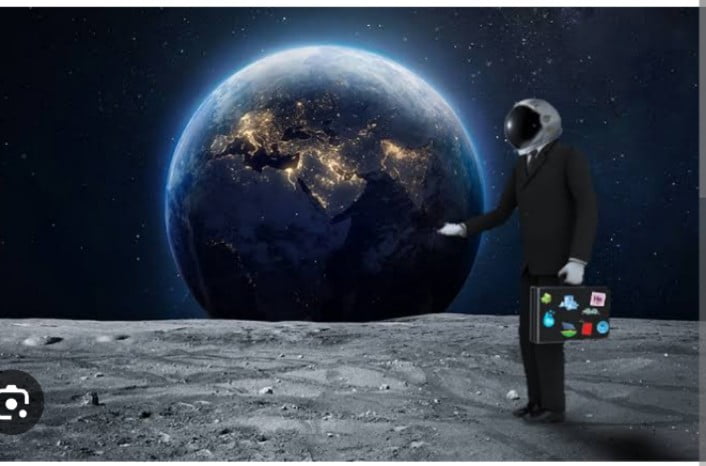In an era marked by rapid technological advancements and audacious aspirations, the concept of a “lunar economy” has emerged as a celestial frontier for economic growth and innovation. As nations gaze skyward, envisaging a future of resource extraction, research, and potential human habitation on the moon, the Indian Space Research Organisation (ISRO) stands at a pivotal juncture to harness the boundless opportunities of this extraterrestrial domain.
The lunar economy, a nascent yet transformative concept, encompasses a spectrum of activities that harness the moon’s resources and strategic position to fuel economic development and technological advancement. Notably, the moon hosts valuable elements such as helium-3, a potential fuel source for future fusion reactors, and water ice, which can be converted into oxygen and hydrogen for fuel production. These resources hold the promise of addressing Earth’s energy and water security concerns.
A pivotal aspect of the lunar economy is the growing interest in lunar mining, whereby resource-rich lunar soil, or regolith, could be extracted and processed for critical minerals and elements. This mirrors Earth’s mining industry but augments it by extending the reach of human endeavor beyond our planet. Helium-3 alone holds the potential to revolutionize energy production, offering a cleaner and more efficient alternative to traditional nuclear fuels.
ISRO, with its storied history of space exploration, is uniquely poised to stake its claim in the lunar economy. The Chandrayaan missions, exemplary demonstrations of India’s lunar exploration prowess, have laid the groundwork for further scientific research and resource exploration on the moon’s surface. The upcoming Chandrayaan-3 mission aims to deepen our understanding of lunar geology and resource availability.
For ISRO, the lunar economy translates into an opportunity to diversify its mandate and capitalize on its technological prowess. By pivoting towards lunar resource exploration and mining technologies, ISRO can tap into an industry projected to be worth trillions of dollars in the coming decades. Moreover, as a formidable player in the space sector, ISRO can play a pivotal role in shaping the norms and regulations governing lunar activities, ensuring that they are environmentally sustainable and equitable.
To elucidate the potential benefits, consider the example of the commercialization of space. Companies like SpaceX and Blue Origin are redefining space travel, ushering in an era of reusable rockets and affordable access to space. This paves the way for collaboration and investment in lunar activities. Furthermore, ISRO’s deep-rooted capabilities in satellite technology and remote sensing could find lucrative applications in lunar resource mapping and monitoring.
However, the path to embracing the lunar economy is not without its challenges. Technical and engineering obstacles must be surmounted, including developing efficient resource extraction technologies and creating sustainable habitats for potential lunar settlers. Additionally, international cooperation is paramount to ensure a coordinated and peaceful exploration of the moon.
As the global space community inches closer to establishing a permanent human presence on the moon, ISRO has a golden opportunity to lead the charge in harnessing lunar resources for the betterment of humanity. By leveraging its expertise, expanding its horizons, and forging international partnerships, ISRO can propel India to the forefront of the lunar economy, carving its name among the pioneers of extraterrestrial resource utilization.
In this pivotal moment, ISRO stands at the crossroads of ambition and innovation. The lunar economy beckons, offering a new frontier to explore, resources to harness, and a legacy to shape. It is an endeavor that encapsulates the spirit of human ingenuity and progress, inviting India to script a new chapter in its storied space odyssey.







